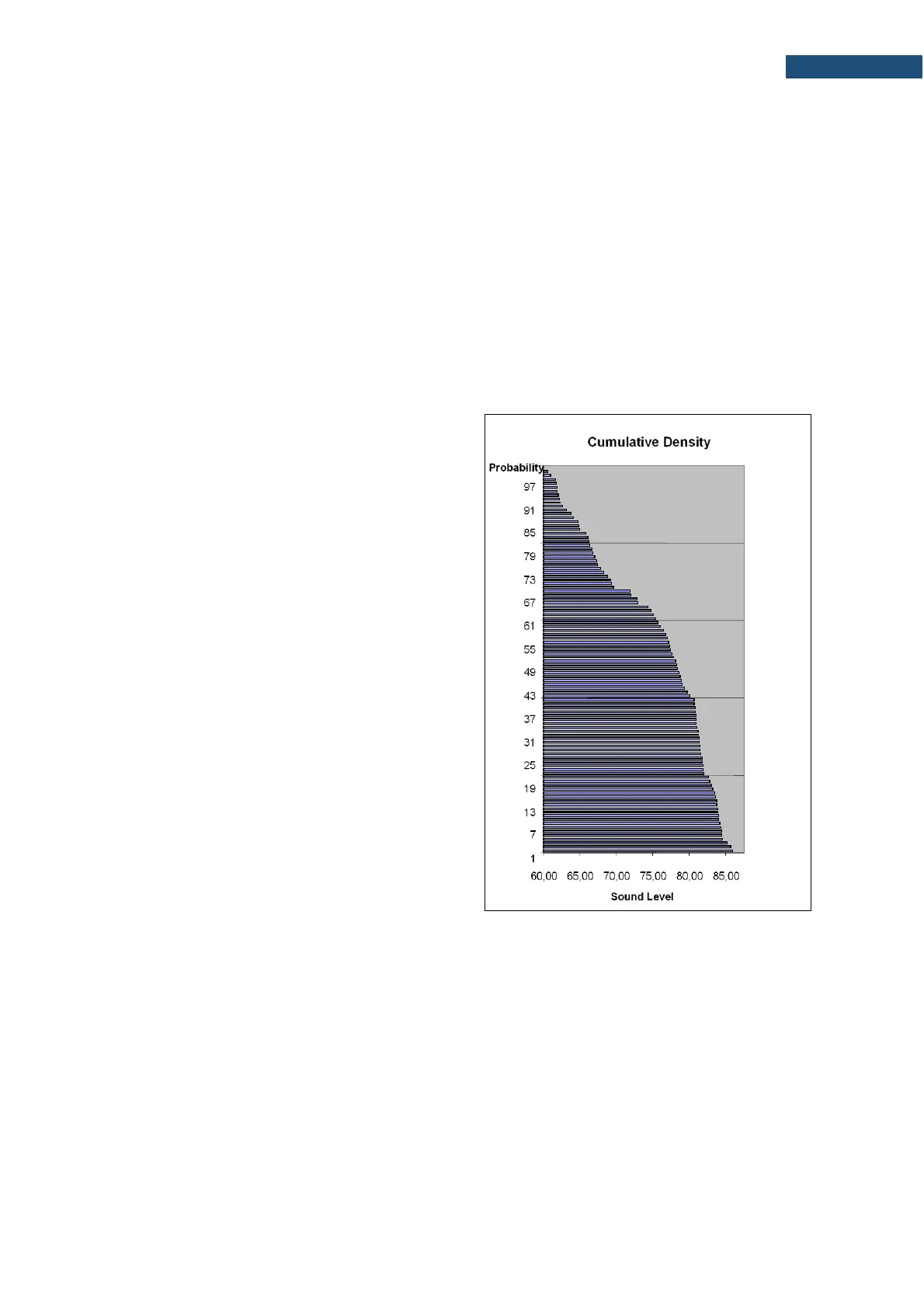value is strictly determined for the measuring instrument. For SV 971A, there are 240 classes
and the width of each class is 0.5 dB. The histogram is the set of the class density values calculated for all
classes.
The statistical distribution function, which determines the
probability (expressed in %) of the noise occurrence on the
level equal or less than
The cumulative density function expressed by the equation:
is directly used to determine so-called statistical levels Ln or
position parameters of the distribution.
Example:
Let us assume that L35 is equal to 76.8 dB. It means
that during the measurements the noise level 76.8 dB
was exceeded in not more than 35% of the
observation period.
The cumulative density function for the exemplary
data is presented in Figure on the right side. In order
to determine the Ln level, one must draw the
horizontal cursor and find out the crossing point
between the cumulative density function and the
cursor. In the instrument the user can determine 10
statistical levels - from L01 to L99 (1% step
of observation period).
The statistical level Ln value, the profile’s number the
statistics are taken from, the RMS detector (Lin., or
Exp.: Fast, Slow or Imp.), the filter’s name (A, C or Z)
and real time are displayed in the top-right side of the
display in one-result view mode.
Exemplary cumulative density
